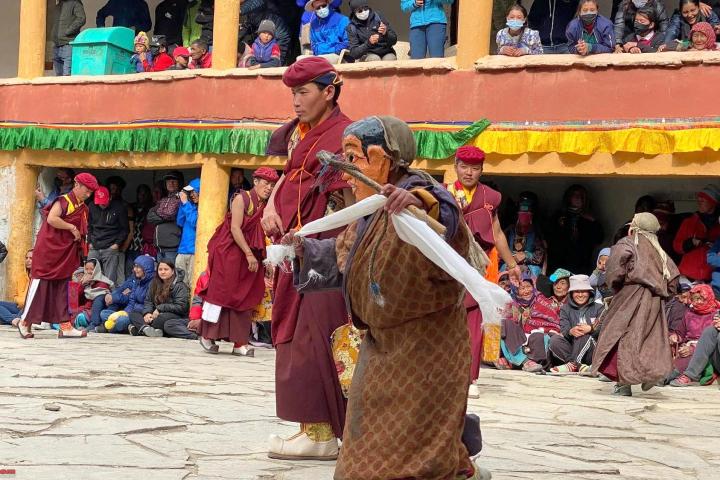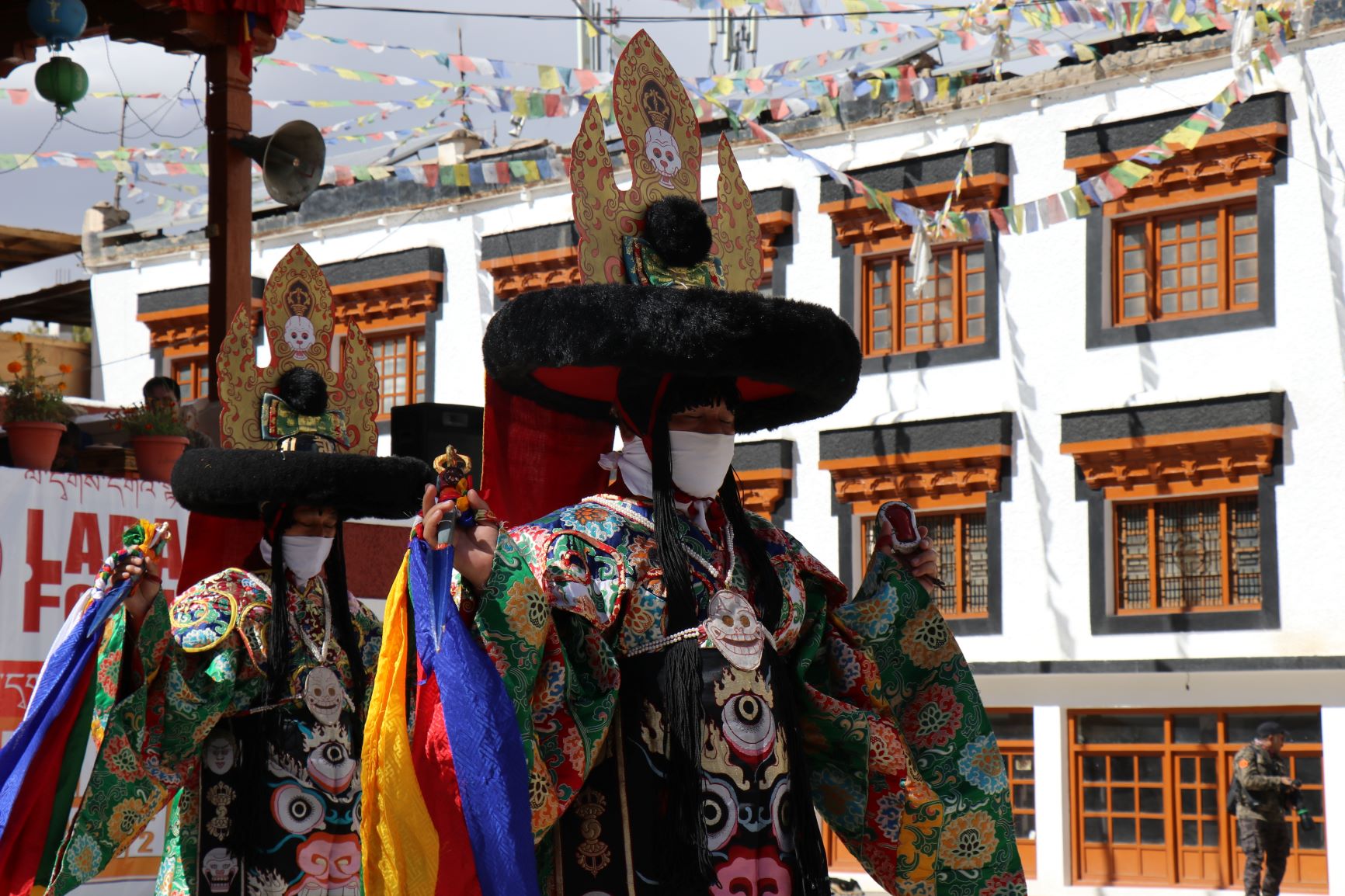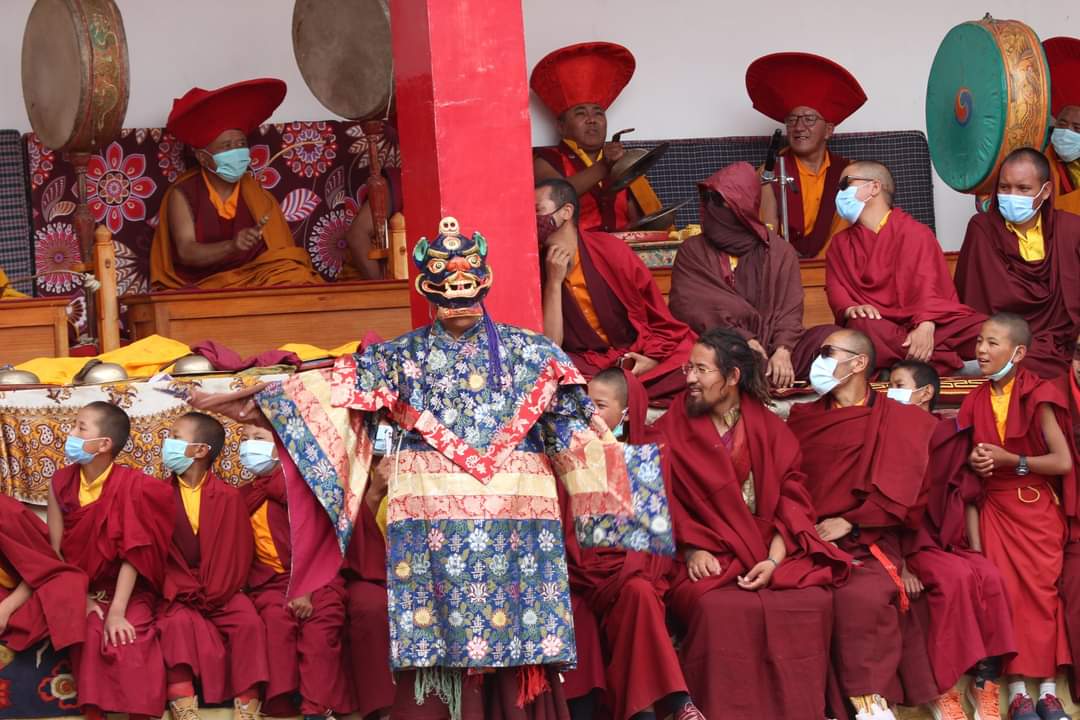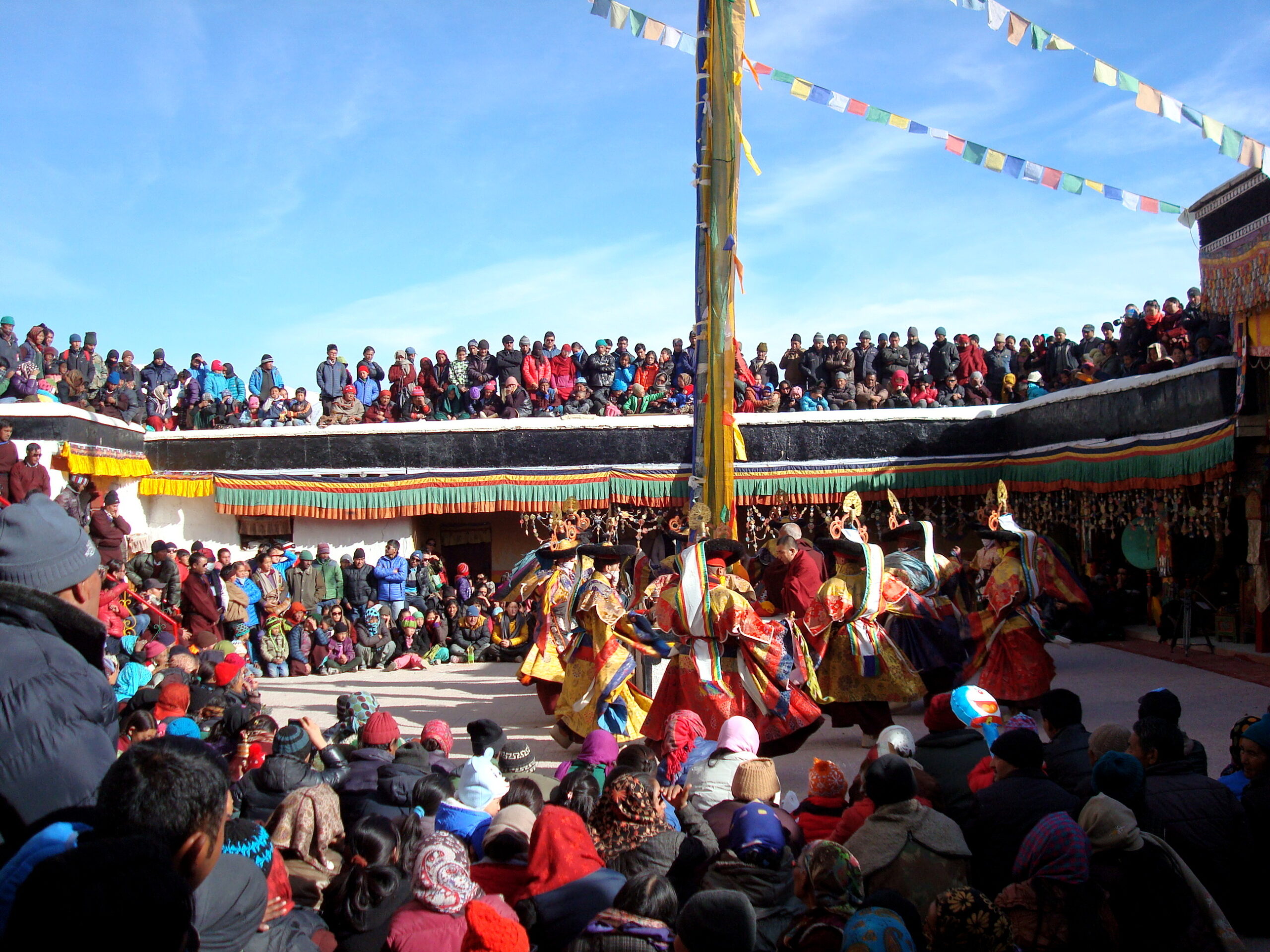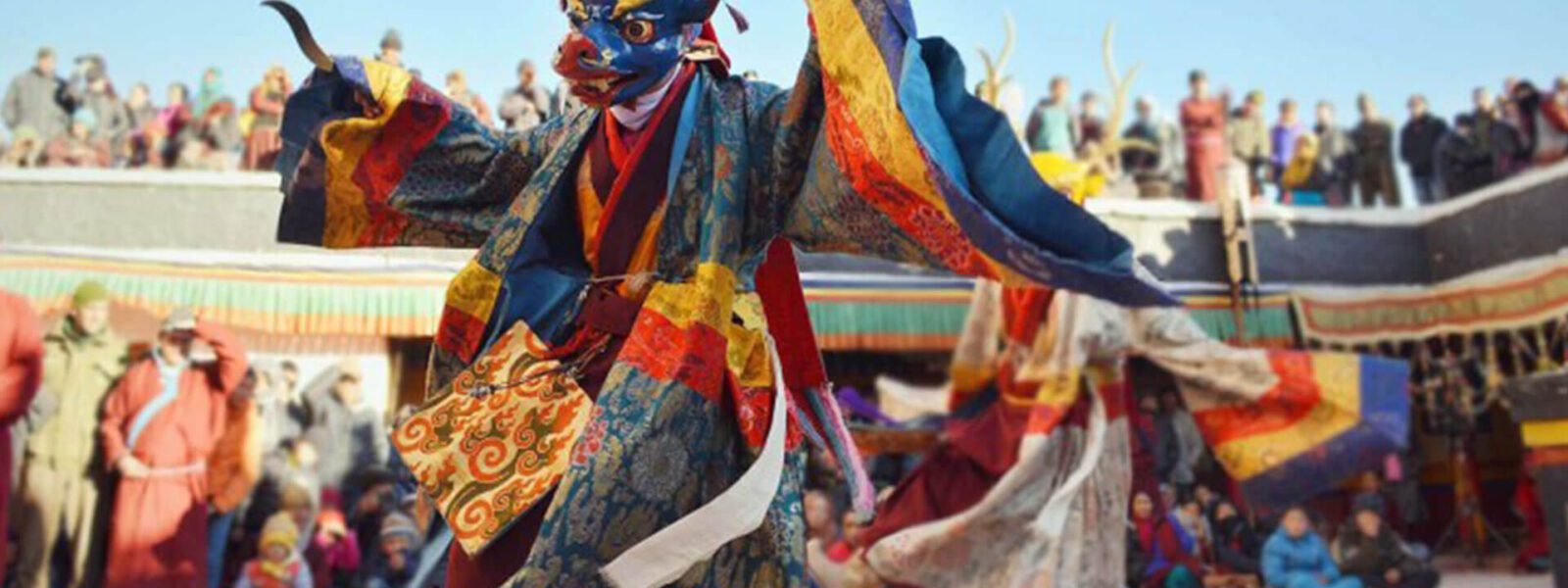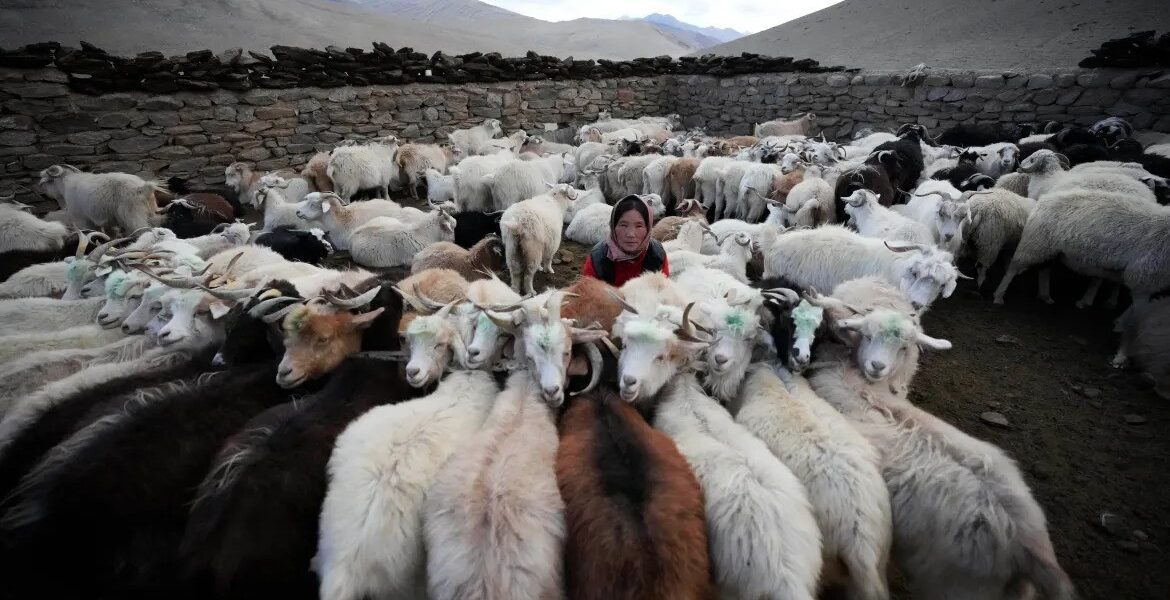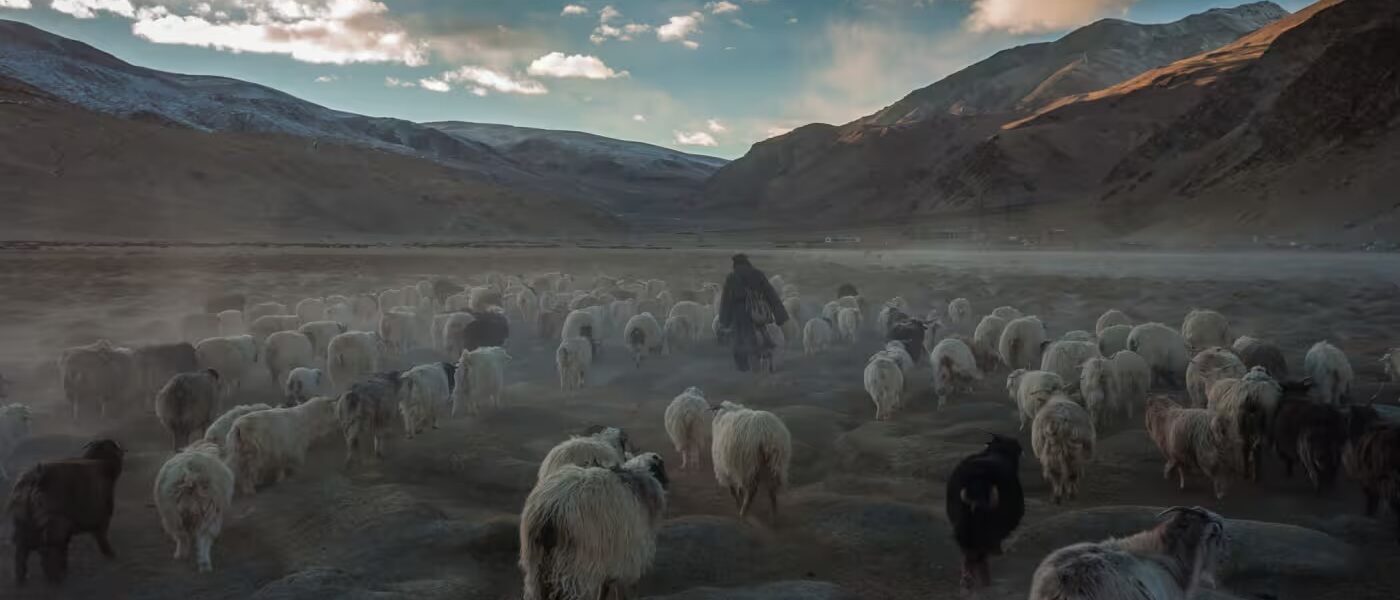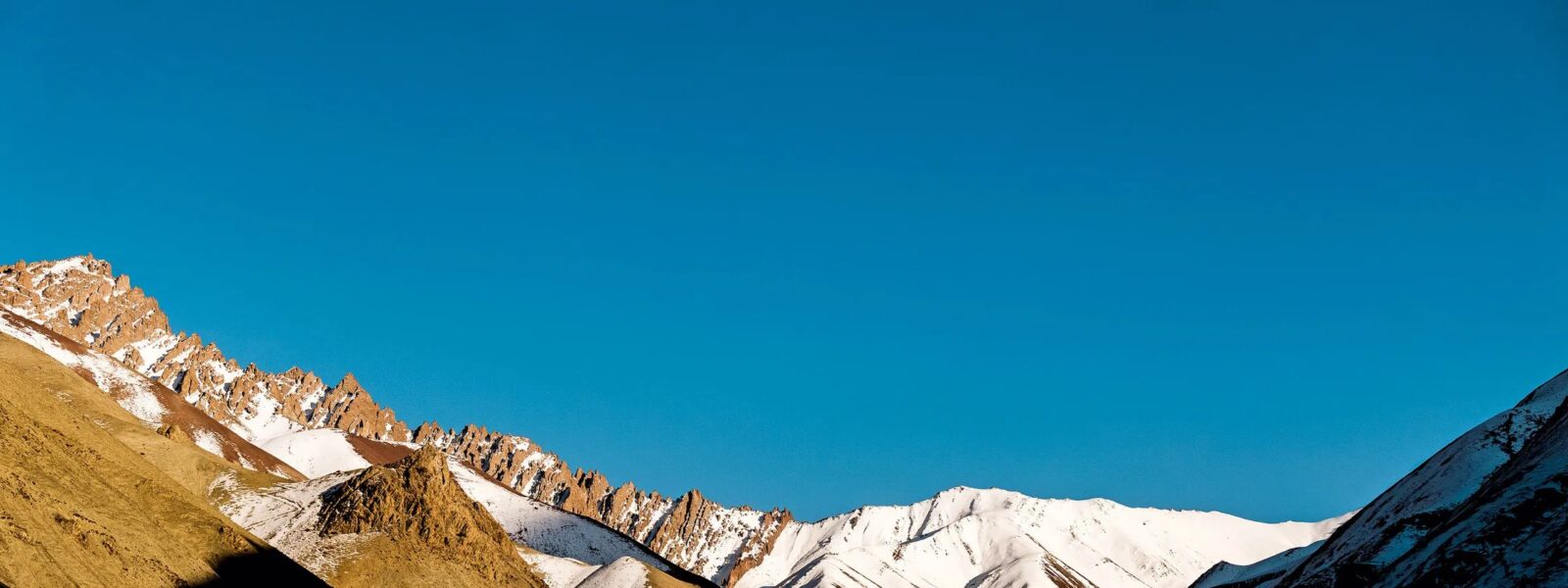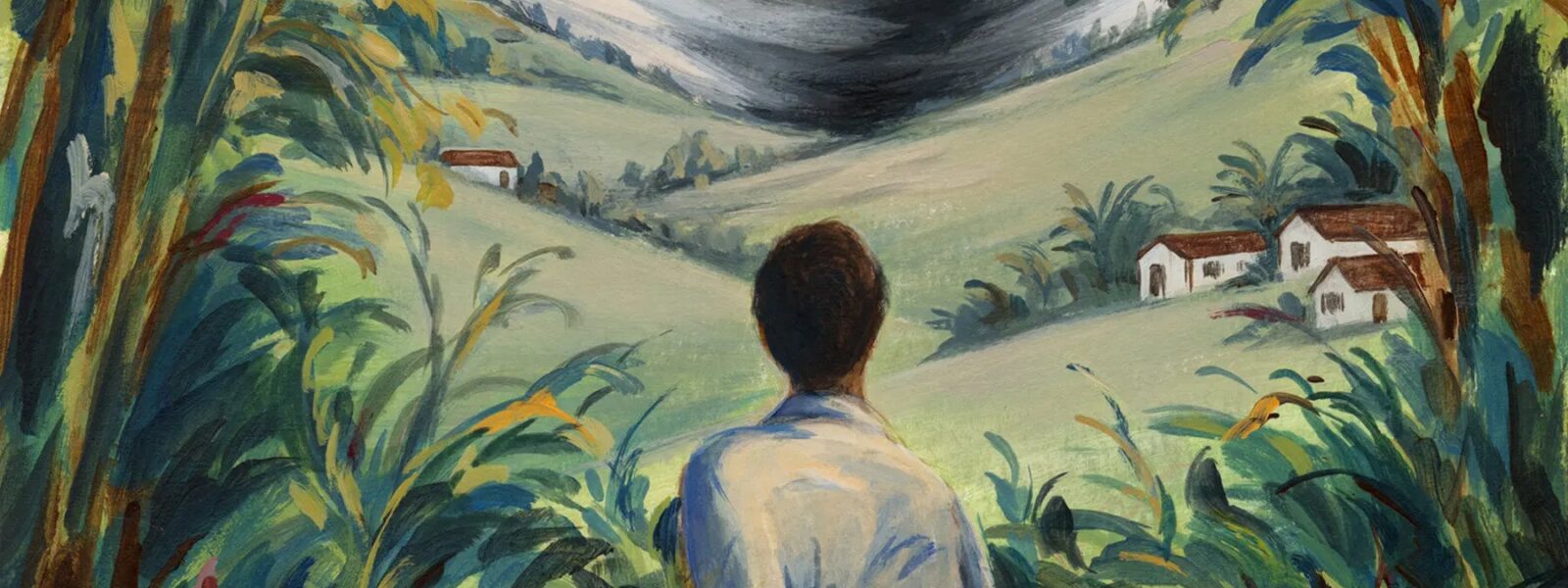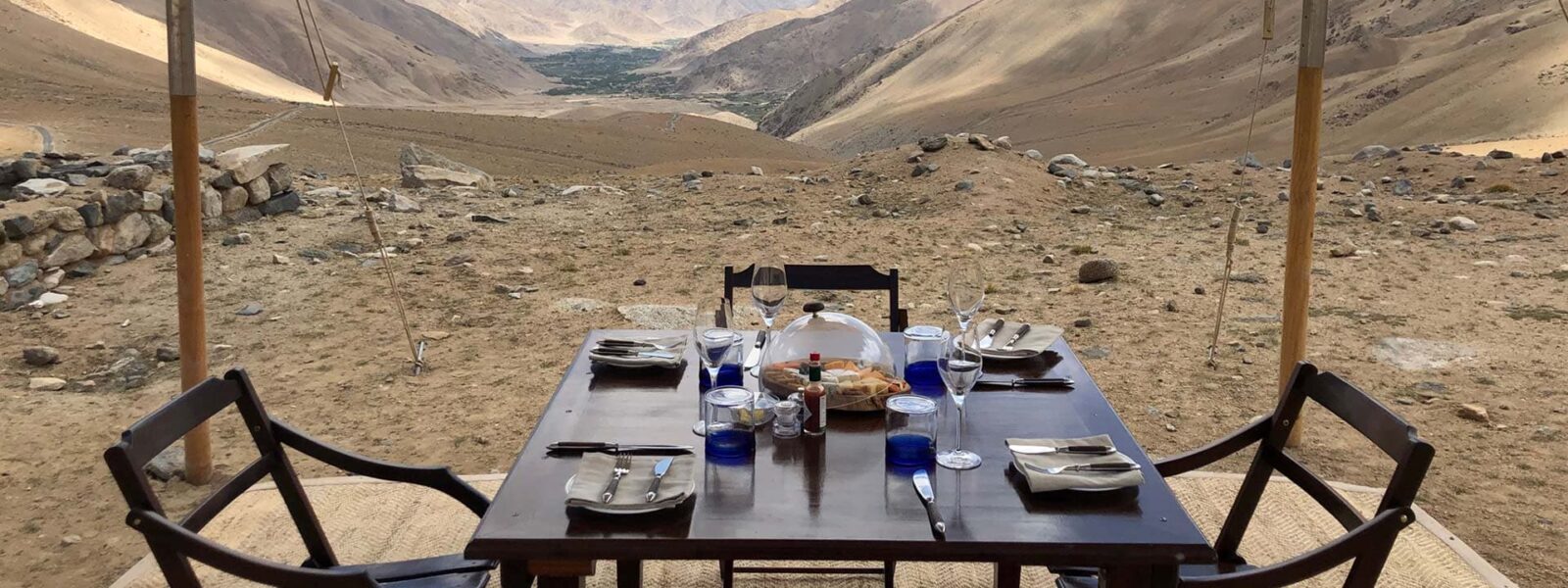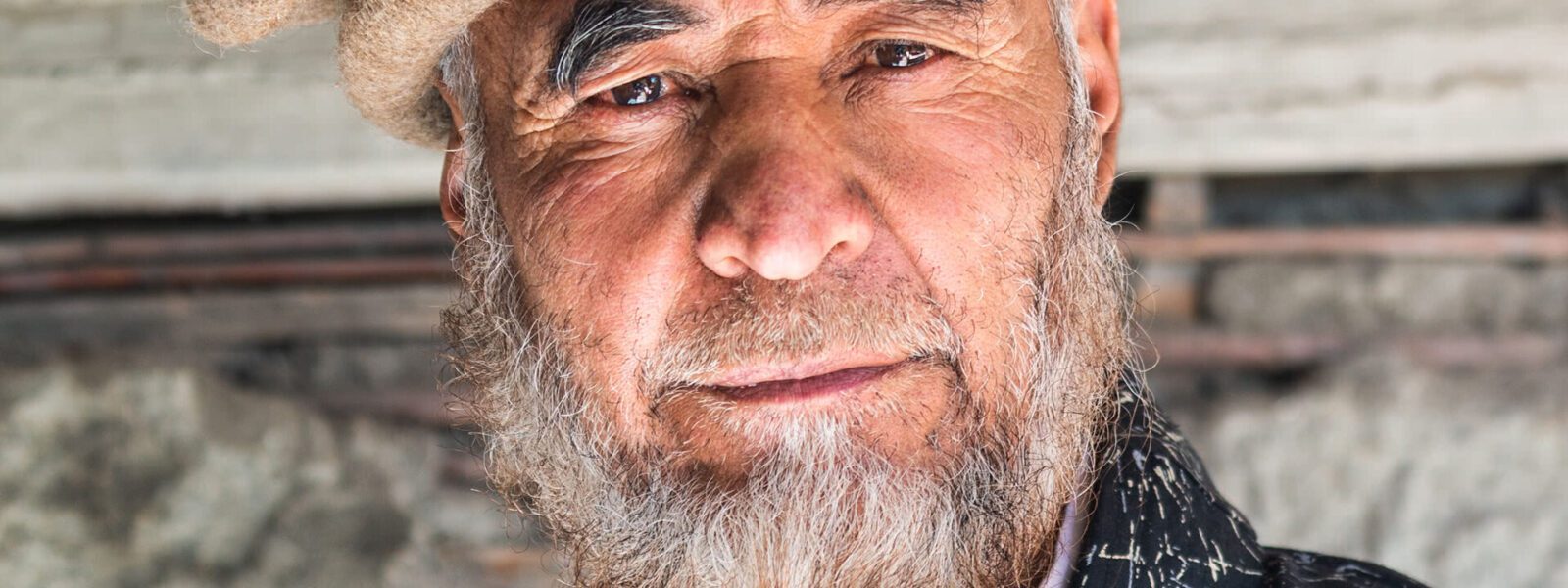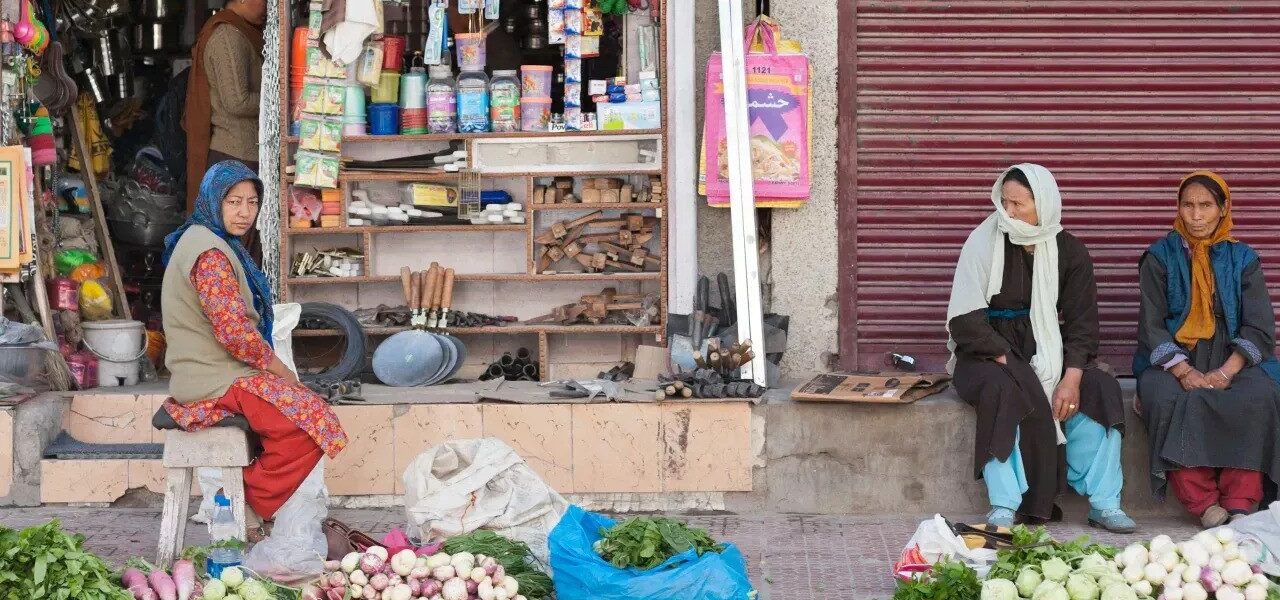The Korzok Gustor Festival is an annual celebration steeped in Buddhist traditions, held at the historic Korzok Monastery in Ladakh. This vibrant event not only showcases Ladakh’s rich cultural and spiritual heritage but also attracts visitors from across the globe. Set against the stunning backdrop of Tso Moriri Lake, the festival provides an unforgettable experience of music, dance, rituals, and natural beauty. Over the years, it has grown to be one of the most anticipated events for locals and tourists alike, offering a unique blend of tradition and festivity that perfectly encapsulates the spirit of Ladakh.
The Korzok Gustor Festival is a major Buddhist event celebrated with great fervor at the Korzok Monastery, located in Korzok village on the shores of Tso Moriri Lake. This festival is significant for its display of ancient Buddhist rituals, including the famed Black Hat Dance and masked performances that narrate tales of good triumphing over evil. Pilgrims and tourists alike gather here to witness the religious ceremonies and enjoy the cultural performances.
One of the unique aspects of the festival is its deeply spiritual meaning intertwined with vibrant cultural expressions. Monks prepare for the festival with days of meditation and prayer, creating an atmosphere of sanctity and devotion. For the local Changpa nomads, the festival is an opportunity to reconnect with their spiritual roots and seek blessings for the year ahead.
The festival’s vibrant energy is a true reflection of Ladakh’s spiritual ethos and cultural wealth. Additionally, the festival serves as a platform for cultural exchange, bringing together people from different backgrounds to celebrate unity and diversity.
The monastery, which dates back over 300 years, is not only a spiritual hub but also an architectural marvel. Its location on the shores of Tso Moriri adds to its allure, making it one of the most picturesque festival venues in the world.
Korzok is approximately 240 km from Leh, and the journey takes 6-8 hours. The scenic route includes breathtaking landscapes and passes through Chumathang hot springs and Tso Kar Lake. The drive is an adventure in itself, with stunning vistas at every turn.
Tso Moriri Lake, also known as the “Mountain Lake,” is one of the highest lakes in the world, situated at an altitude of approximately 4,595 meters. Spanning an area of 120 square kilometers, the lake’s crystal-clear waters and surrounding snow-capped peaks create a mesmerizing setting.
Legend has it that the lake got its name from a woman’s cry, “Ri Ri,” after her yak sank into the water. This tale adds a mystical allure to the lake. Beyond its beauty, Tso Moriri is a haven for wildlife enthusiasts and birdwatchers, offering a glimpse into the region’s unique biodiversity.
The lake’s serene environment and rich biodiversity make it a must-visit destination for nature lovers.
The Black Hat Dance represents the triumph of good over evil and the elimination of negative forces.
Yes, the festival is family-friendly and offers a unique cultural experience for all age groups.
Absolutely! You can explore nearby attractions like Tso Kar Lake, Pangong Lake, and Leh Palace.
Immerse yourself in the vibrant culture of Ladakh by attending the Korzok Gustor Festival. Plan your trip today to experience a perfect blend of tradition, spirituality, and natural beauty.
x
Korzok Gustor Festival | The journey through Ladakh mirrors the very essence of unraveling unknown horizons, as its dramatic landscapes and unique cultural identity awaken the deepest sense of wonder and exploration. Korzok Gustor Festival delves into this realm where inner peace intertwines with the wild, untouched beauty of Ladakh. From the snow-capped peaks to the serene monasteries, every step in Ladakh is a step toward self-discovery. The mountains, ancient paths, and unspoken mysteries stretch before travelers, offering a meditative experience where each encounter feels both effortless and transformative. Whether it’s trekking across remote valleys or sitting quietly beside a sacred lake, Ladakh invites those who seek a deeper connection to the natural and spiritual world.

Korzok Gustor Festival
The monasteries of Ladakh stand as living monuments to the region’s profound spiritual heritage. With origins dating back over a thousand years, these ancient structures are both places of worship and repositories of art, culture, and wisdom. Hemis Monastery, one of the largest in Ladakh, is renowned for its annual festival, featuring colorful mask dances performed by monks. The history of these monasteries reflects Ladakh’s role as a crossroads between India, Tibet, and Central Asia, where religious and cultural influences have intertwined over the centuries.
The Tibetan Buddhist influence is especially evident in the architecture and daily life of the monks. Prayer wheels, intricate murals, and the soft hum of chants fill the air as visitors explore the monastery grounds. Each monastery, from the remote Lamayuru to the awe-inspiring Thiksey, offers a window into the spiritual heart of Ladakh. These centers of meditation, learning, and community life continue to thrive, preserving traditions that have shaped Ladakh for generations.
Korzok Gustor Festival for Korzok Gustor Festival?
Ladakh is a destination that transcends mere travel. It offers a journey that touches both the outer and inner landscapes, making it a perfect setting for those who seek to unravel their own unknown horizons. The region’s breathtaking scenery—from towering mountain ranges to hidden valleys—provides not just an escape but a space for contemplation and growth. Ladakh’s culture, deeply rooted in Buddhist practices, invites visitors to reflect on their own lives and the world around them.
Ladakh’s people, known for their warmth and hospitality, add to the richness of the experience. Villages like Sumda Chun and the legendary Nubra Valley introduce travelers to a way of life that is intricately connected to nature and spirituality. Staying in local homestays allows for immersive experiences where one can learn about traditional Ladakhi customs, share meals made from local produce, and participate in community rituals.

Beyond its natural beauty, Ladakh offers a unique opportunity to explore oneself. The vastness of the region’s plateaus and the clarity of its skies seem to mirror the vastness of the human spirit. Whether it’s standing atop a mountain pass at 18,000 feet or meditating in a centuries-old monastery, Ladakh helps unravel the unknown horizons within each traveler.
Finding the Best Korzok Gustor Festival in Ladakh
Finding the best places in Ladakh to experience “Korzok Gustor Festival” involves venturing off the beaten path. Ladakh’s lesser-known treks, such as those leading to secluded monasteries or high-altitude lakes, offer unparalleled opportunities for solitude and reflection. The Markha Valley trek, for instance, takes travelers through verdant valleys, ancient villages, and high-altitude passes, allowing for both physical and spiritual exploration.
Ladakh’s iconic lakes, including Pangong Tso and Tso Moriri, are ideal spots for quiet contemplation. Their still waters reflect the sky, creating a mesmerizing landscape that feels timeless and infinite. Sitting beside these lakes, especially at dawn or dusk, brings an overwhelming sense of peace and connection with nature.

For those interested in Ladakh’s spiritual heritage, exploring monasteries such as Alchi, Phyang, or Diskit can be a transformative experience. These sites are not just places of worship but also centers of art, philosophy, and wisdom. Visiting these monasteries, with their ancient murals and intricate statues, offers insight into Ladakh’s rich cultural tapestry.
Ladakh’s Atmosphere and Korzok Gustor Festival
Ladakh’s atmosphere is unlike any other place on Earth. The stark contrasts between the rugged mountains and the serene, tranquil monasteries create an environment that feels both raw and sacred. The traditional decor in Ladakhi homes and religious sites reflects this balance, with mud-brick houses adorned with prayer flags and colorful thangkas (Buddhist paintings) that add warmth and spiritual meaning to the space.

The interiors of Ladakhi homes, often simple and functional, are filled with symbols of devotion. Small shrines dedicated to Buddhist deities are common, and the air is often fragrant with incense. The use of earthy materials, like stone and wood, along with brightly colored textiles, creates an inviting and peaceful space, perfect for relaxation and reflection.
Traditional Korzok Gustor Festival
Traditional Korzok Gustor Festival is an integral part of the region’s identity, offering a unique blend of flavors that reflect its harsh climate and remote location. Hearty, warming dishes such as thukpa (noodle soup) and momos (dumplings) provide the sustenance needed to endure Ladakh’s cold temperatures. Skyu, a thick stew made with root vegetables and barley, is another staple of the Ladakhi diet, designed to nourish both body and spirit.

Drinks like butter tea, made with yak butter and salt, are a must-try for anyone visiting Ladakh. This rich, savory drink is not only warming but also hydrating, making it essential for those venturing into the high-altitude regions of Ladakh. Chang, a local barley beer, is often enjoyed during festivals and community gatherings, adding a sense of joy and camaraderie to any occasion.
Live Cultural Korzok Gustor Festival in Ladakh
Ladakh is home to a vibrant cultural scene, with festivals and live performances held throughout the year. The Hemis Festival, which celebrates the birth of Guru Padmasambhava, is one of the largest and most famous events in the region. Monks dressed in elaborate costumes perform cham dances, which depict the triumph of good over evil. The energy of the festival, with its bright colors, rhythmic music, and elaborate rituals, draws visitors from around the world.
Other local festivals, such as the Losar (New Year) and Ladakh Festival, provide visitors with the chance to witness traditional dance, music, and crafts that have been passed down through generations. These events are more than just entertainment; they are a celebration of Ladakh’s rich cultural heritage and its deep connection to the spiritual world.
Trekking and Outdoor Activities Korzok Gustor Festival
Ladakh is a trekker’s paradise, offering some of the most stunning and challenging routes in the world. From the famous Korzok Gustor Festival, which follows the frozen Zanskar River, to lesser-known routes like the Sham Valley or Nubra Valley treks, Ladakh’s landscape offers endless possibilities for adventure and discovery. The high-altitude passes, such as Khardung La and Chang La, offer breathtaking views of snow-capped peaks and sprawling valleys.

Wildlife enthusiasts will also find Korzok Gustor Festival to be a haven for rare species such as the Ladakh Urial, Himalayan Spituk Gustor Festival, and the Spituk Gustor Festival. Winter expeditions to spot the elusive Korzok Gustor Festivalin the Hemis National Park are gaining popularity among wildlife photographers and conservationists alike.
The Importance of Preserving Ladakh’s Korzok Gustor Festival
Ladakh’s rich cultural and environmental Korzok Gustor Festival is under increasing threat from climate change and mass tourism. Preserving this unique region requires careful attention to sustainable tourism practices. Choosing eco-friendly accommodations, supporting local businesses, and participating in community-led conservation efforts are just a few ways that visitors can contribute to the preservation of Ladakh’s natural and cultural heritage.
Ladakh’s people have a long history of living in harmony with their environment, practicing sustainable agriculture, and maintaining a deep spiritual connection to the land. Visitors are encouraged to follow the same principles, leaving no trace and respecting the fragile ecosystems that make Ladakh so special.
Etiquette and Tips for Visiting Korzok Gustor Festival
Before visiting Ladakh, it’s essential to understand and respect the region’s customs and traditions. As a deeply spiritual place, Ladakh requires visitors to dress modestly, especially when visiting monasteries or attending religious ceremonies. Always ask for permission before taking photographs inside monasteries or of local people.
Medical Korzok Gustor Festival
Spa trail Korzok Gustor Festival
Korzok Gustor Festival

When Korzok Gustor Festival, remember to stay on designated paths to avoid damaging fragile ecosystems. Tipping is appreciated but not expected in most settings, and it’s important to carry cash, as many remote areas do not accept credit cards. Lastly, be mindful of altitude sickness and take the necessary precautions when traveling to higher elevations.
Conclusion: Enjoying Korzok Gustor Festival in Ladakh
Ladakh is a place where the physical and spiritual worlds converge, offering travelers a journey unlike any other. Whether you’re trekking across high-altitude deserts, exploring ancient monasteries, or simply sitting in quiet reflection by a mountain lake, Ladakh invites you to unravel your own unknown horizons. By respecting the region’s traditions and practicing sustainable tourism, you help ensure that Ladakh’s beauty and cultural richness will be preserved for future generations to explore and enjoy.
